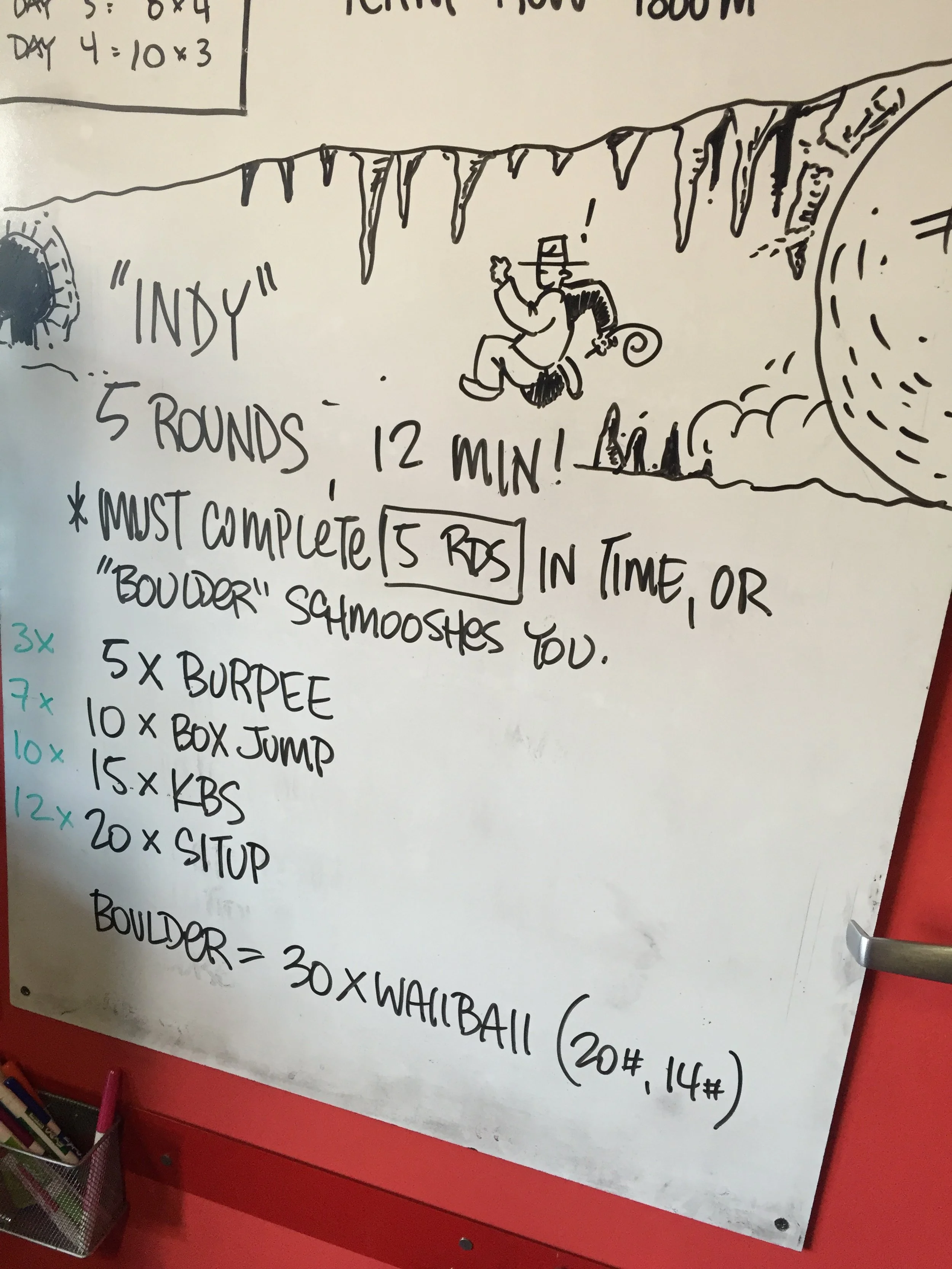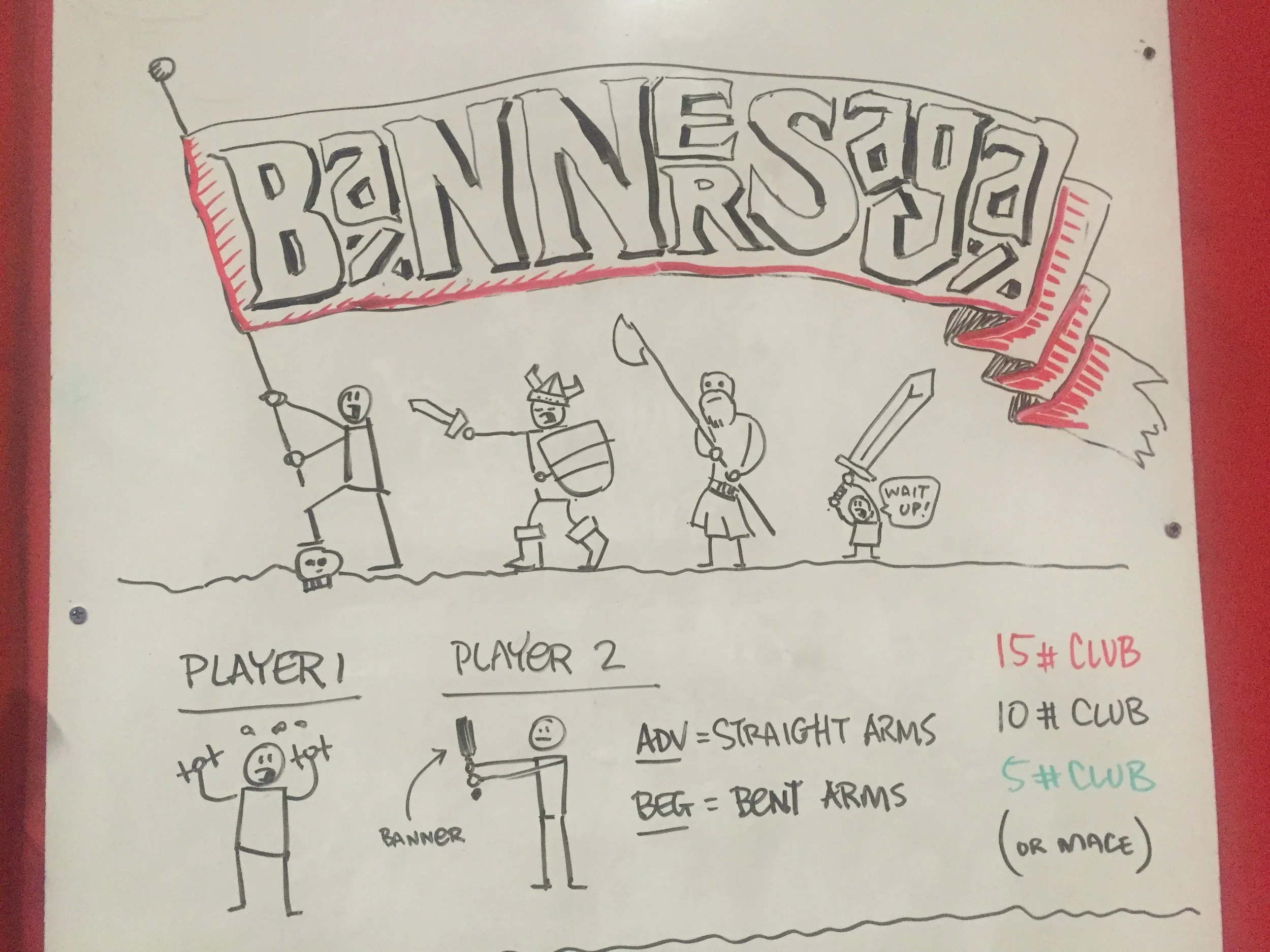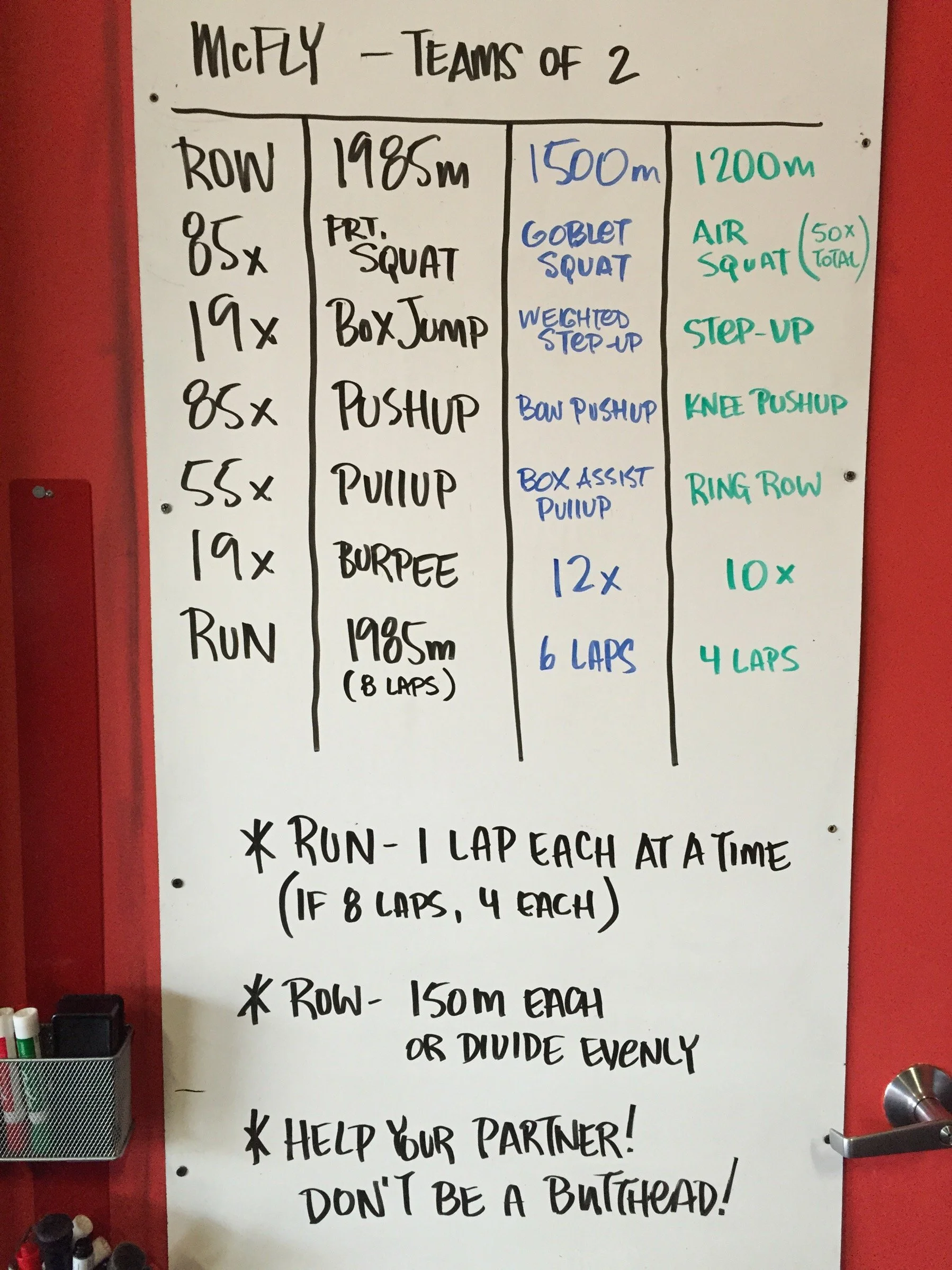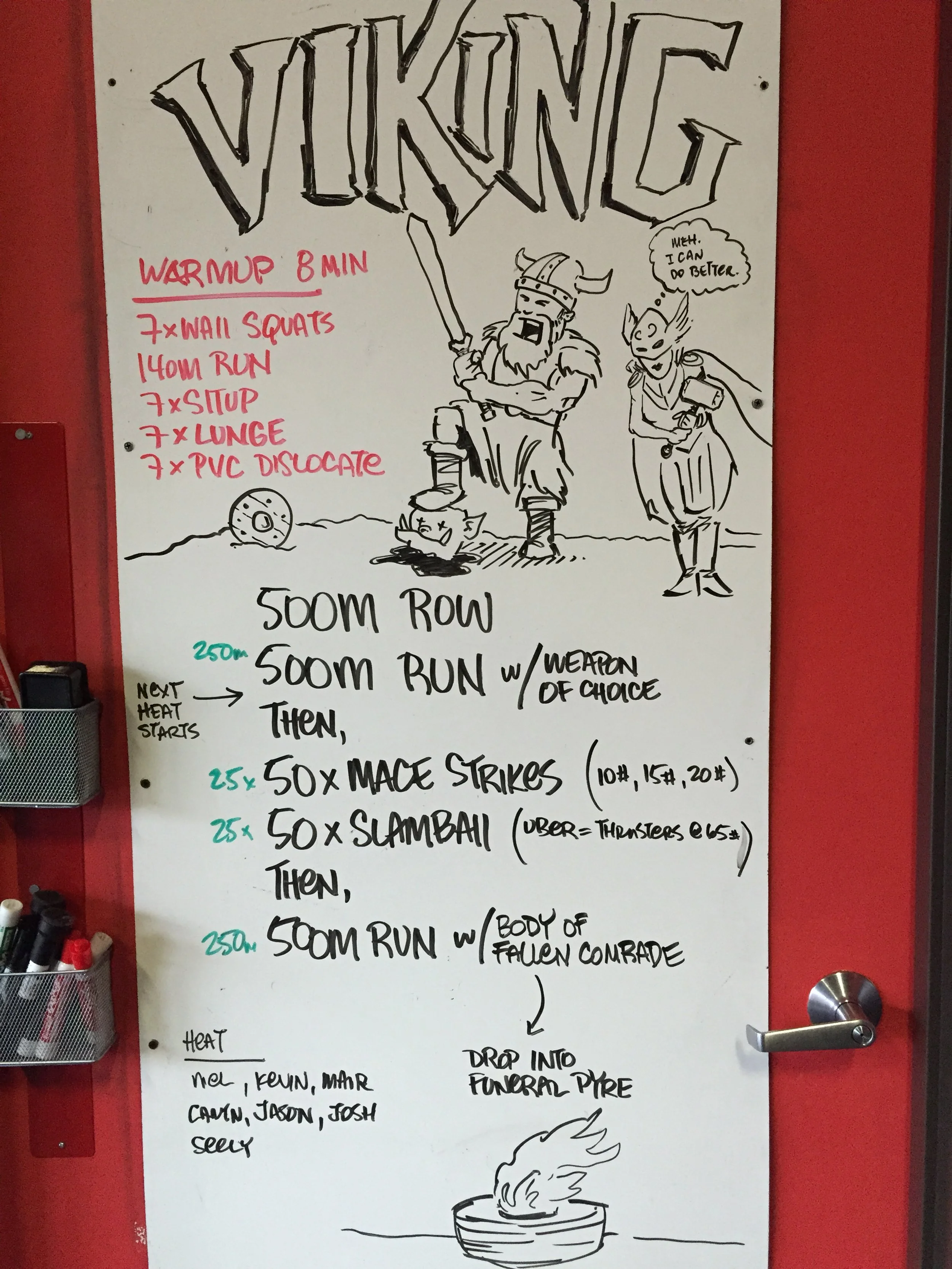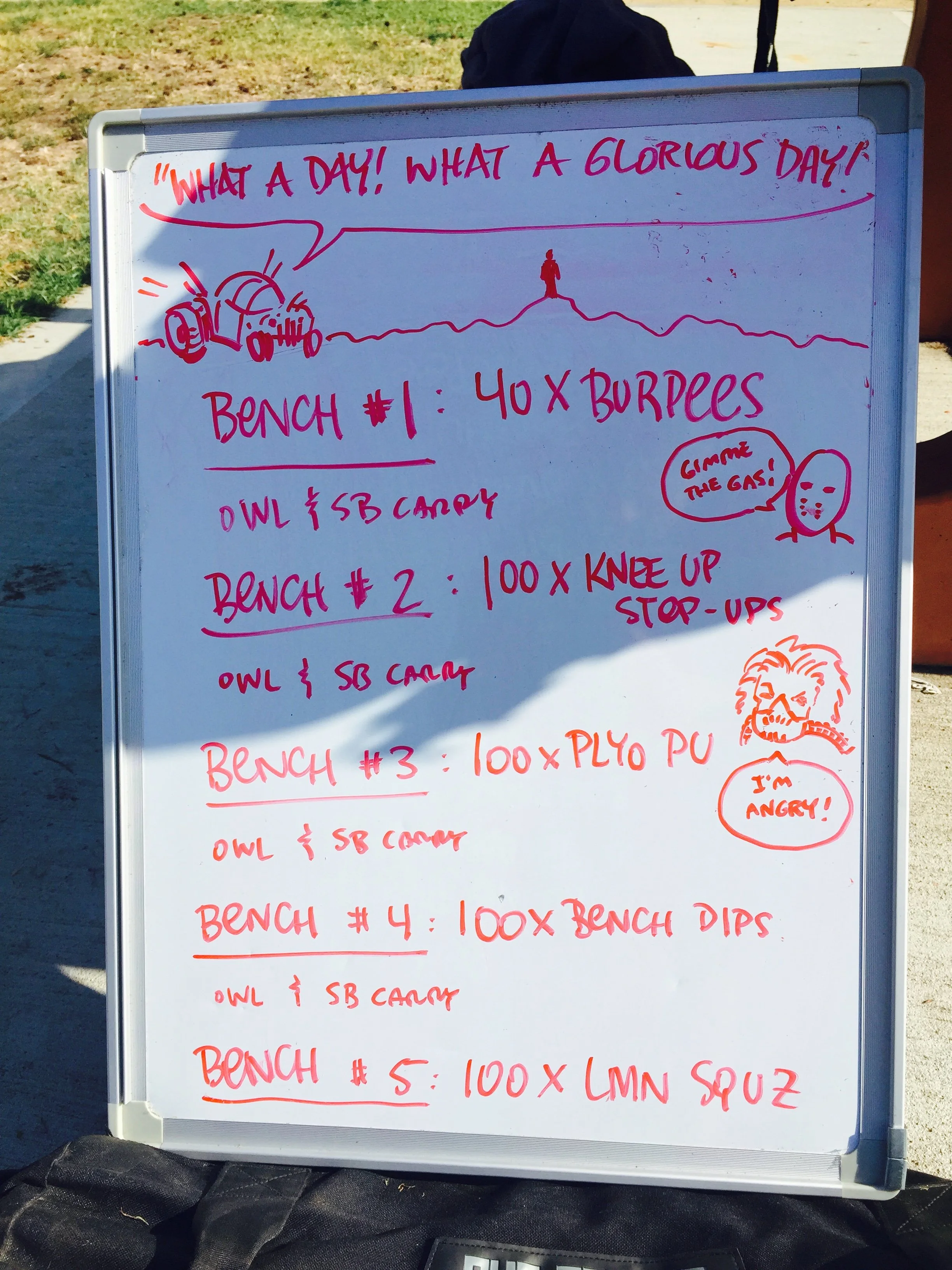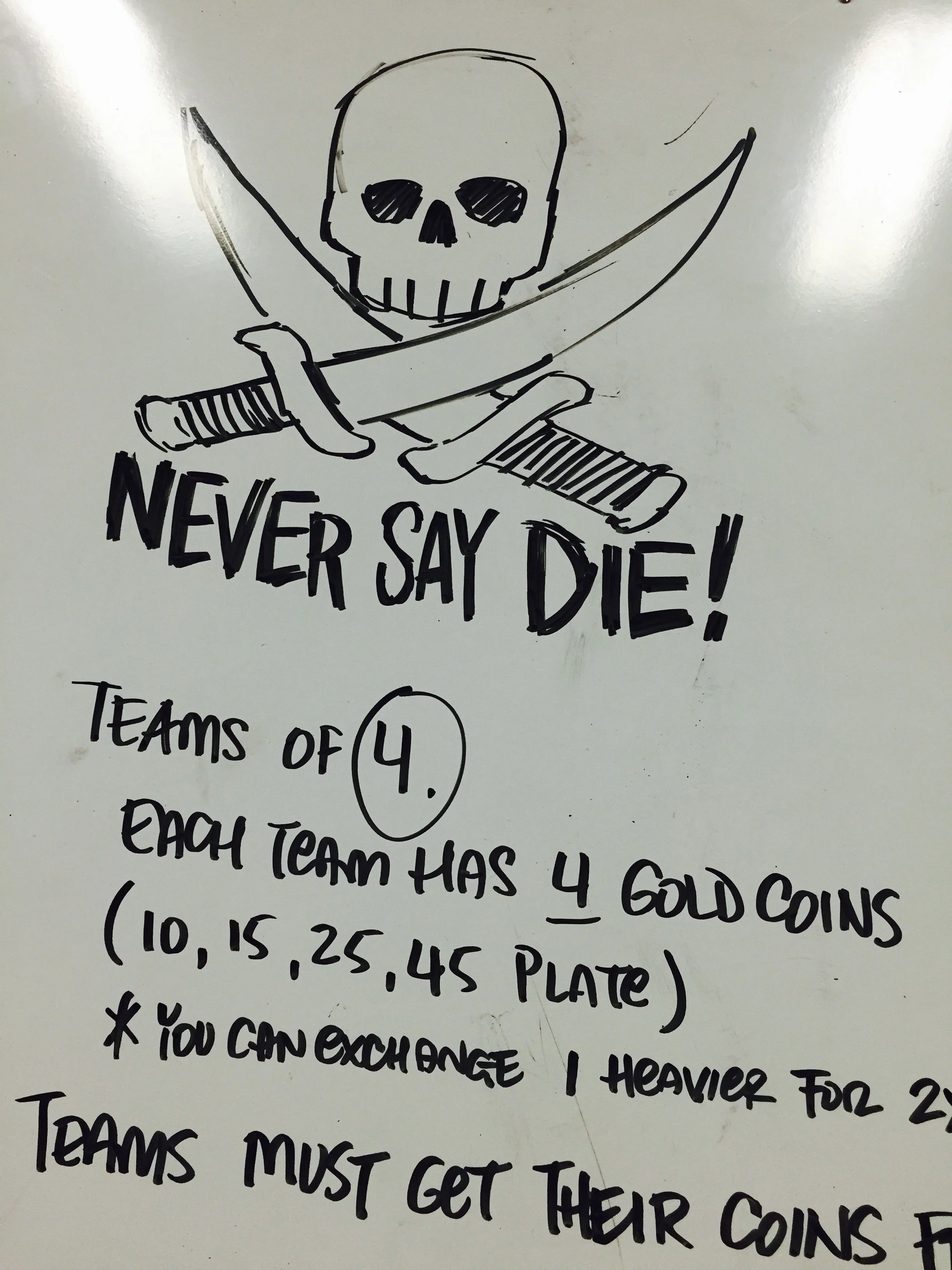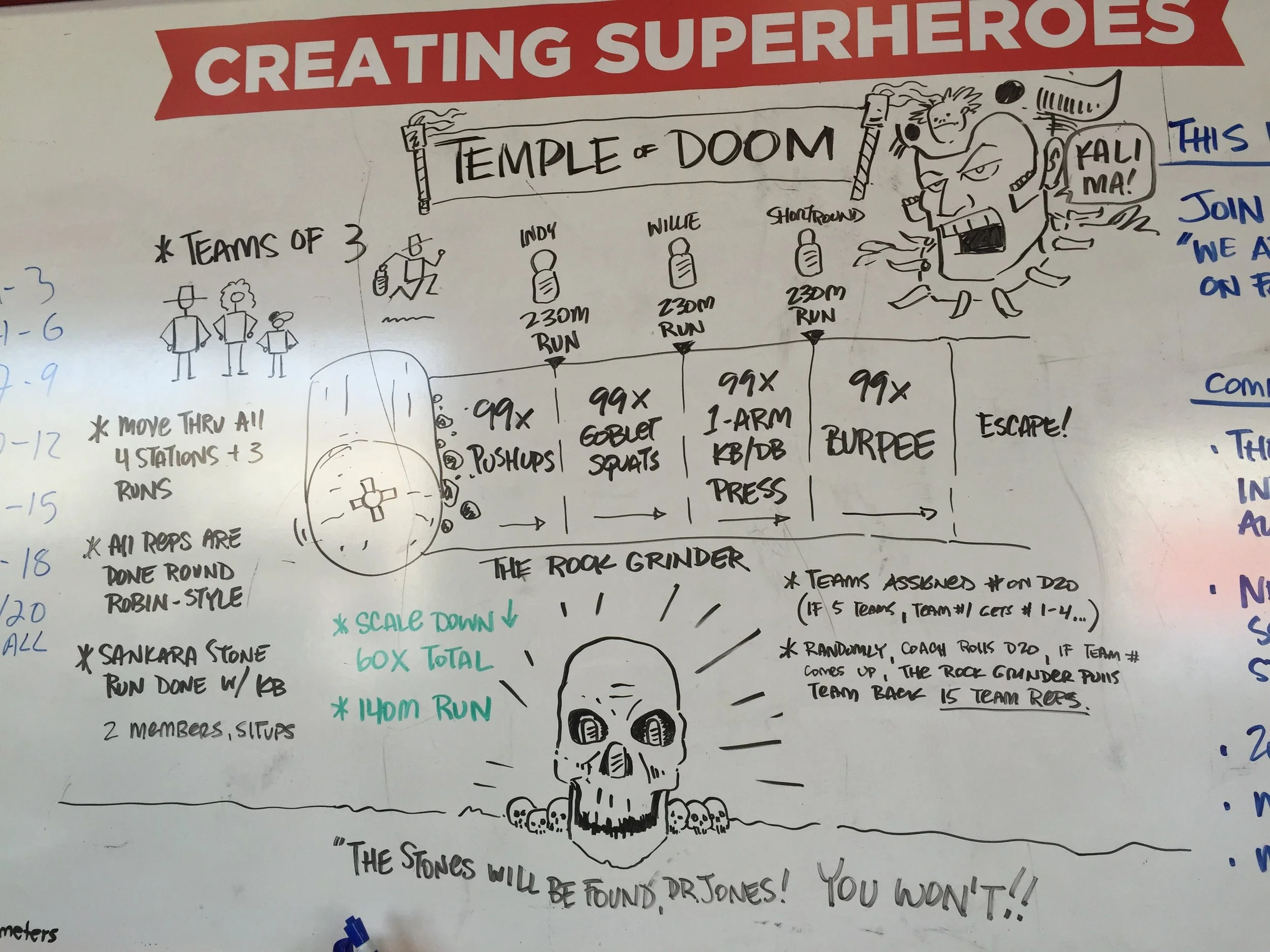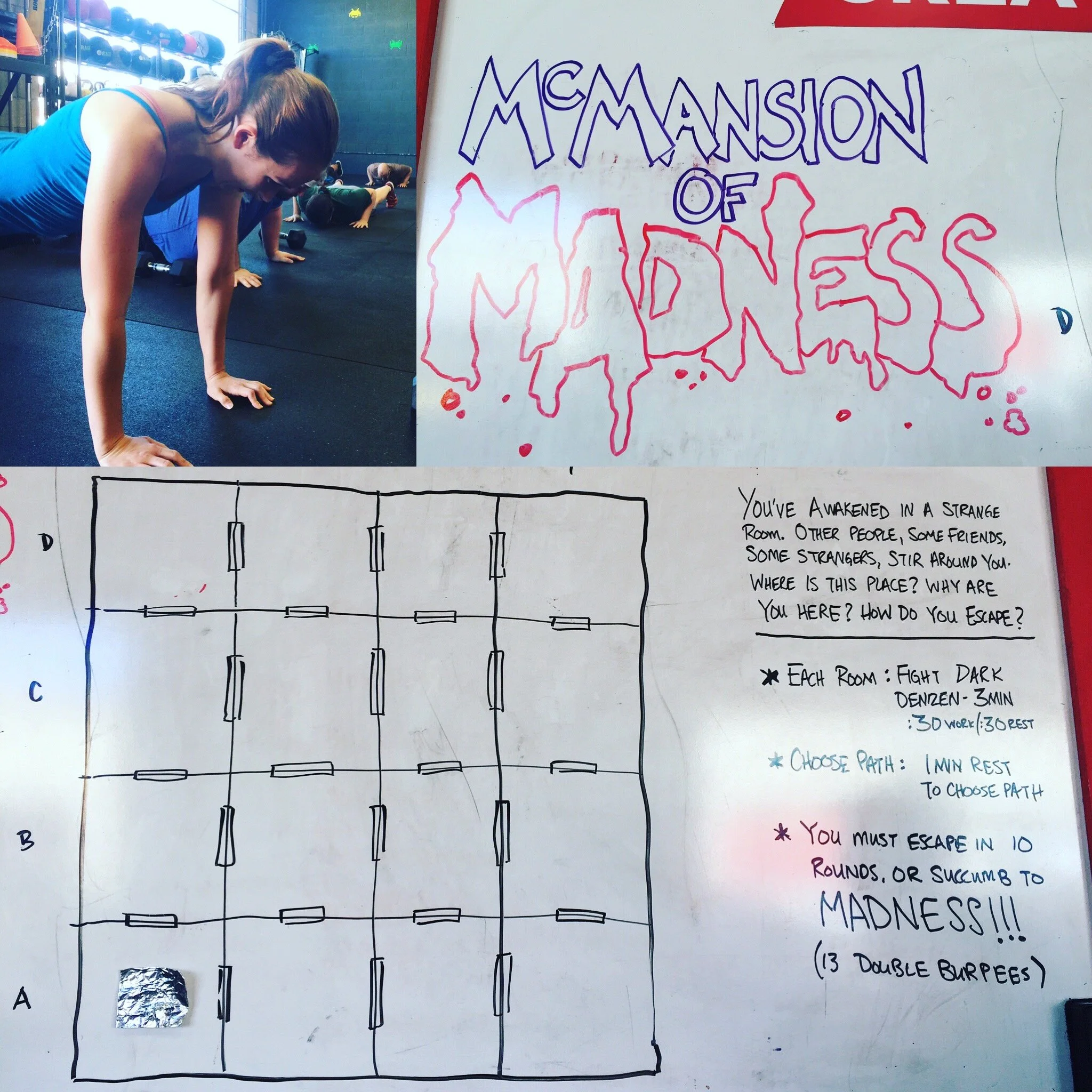
Nerdstrong Fitness
Project:
Boutique Fitness Small Business
Lifespan:
2013-2022
My Role:
Founder/Owner
In a world where personal fitness often feels like a solitary grind, one garage gym emerged as a beacon of innovation and inspiration, transforming not just bodies, but lives. This epic journey began as a mere concept—a garage filled with weights and basic equipment—yet it quickly evolved into a fully-fledged fitness small business, captivating the imaginations of fitness enthusiasts and reluctant newcomers alike.
At the heart of this transformation was a revolutionary approach to fitness that melded the mechanics of role-playing games (RPGs) with dynamic workout programming. Participants were no longer just counting reps; they were embarking on quests, customizing their characters, and conquering challenges within a richly developed narrative framework. Each workout became a dungeon crawl, where clients armed themselves with not just physical strength but with purpose, skill, and camaraderie.
The atmosphere was charged with a unique blend of competition and support, where members cheered each other on as they accomplished quests and achieved milestones. Every goal reached was celebrated like a leveling-up moment, complete with achievements and accolades that fostered a sense of belonging and progress. Clients donned their metaphorical armor, pushing themselves and each other to surpass limits they never thought possible.
Storytelling wove through the fabric of each session, immersing clients in fantastical worlds while they sweat and strove toward personal bests. As characters developed, so did the clients, finding empowerment within themselves that extended beyond the gym walls. This garage gym, once a humble space filled with equipment, had transformed into a thriving community—one where the reluctance to change was met with invitation, where every exercise was a step toward becoming a hero in one’s own narrative.
As this journey continues to unfold, the garage gym stands testament to the power of creativity in fitness—a testament to what can happen when you merge passion with purpose, turning the mundane into the extraordinary. Here, everyone is welcomed to join the adventure, ready to rise above challenges and forge a new identity through the transformative realm of game mechanic-driven fitness programming.
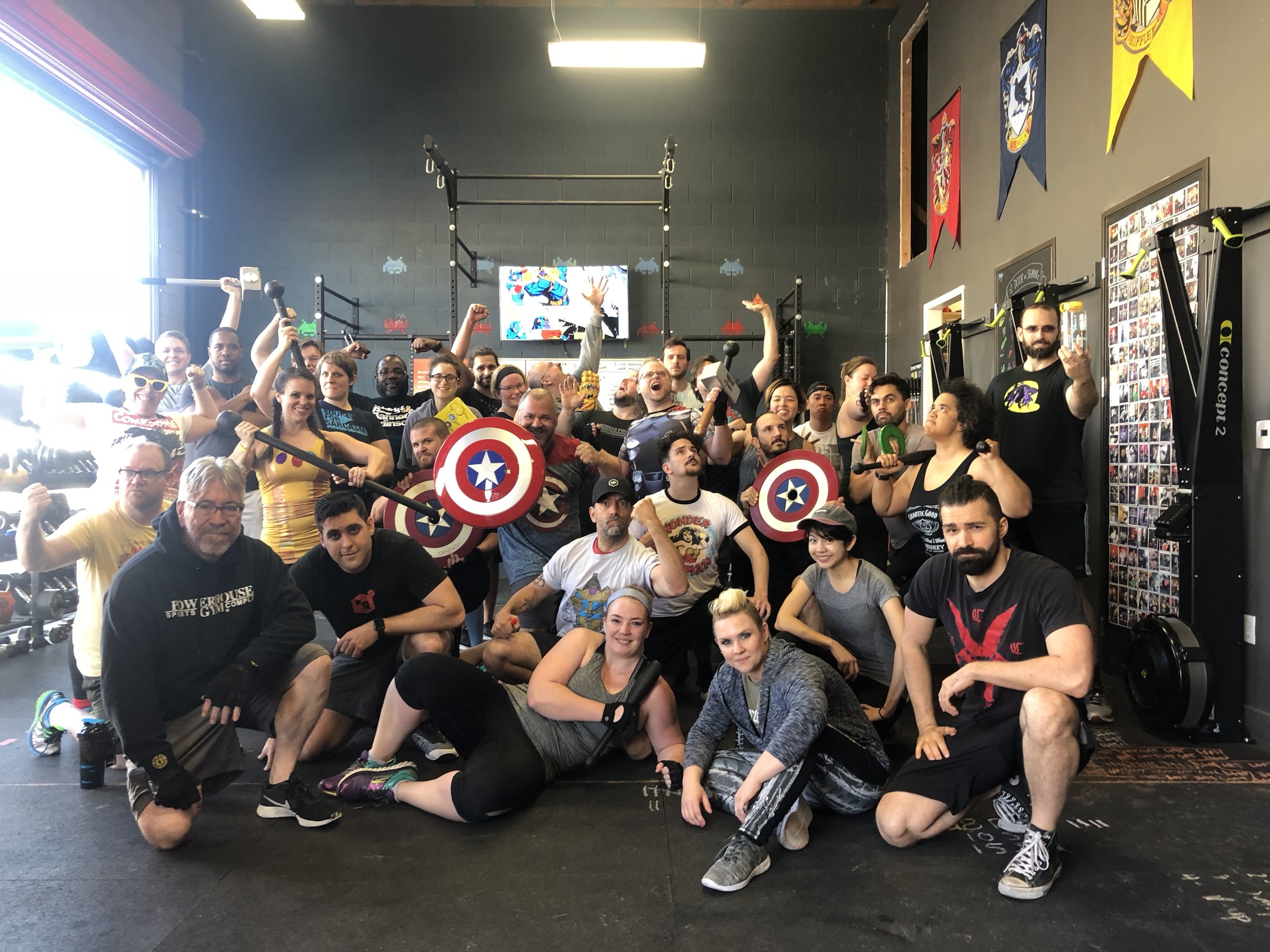
Summary
As founder and creator, I worked with a team to take this small garage gym from pie-in-the-sky idea to full scale small business launch. Before launch we acquired a small band of customers, conducted pricing tests, tested workout methodologies and quickly staffed up in order to meet demand (which was surprisingly high).
As the owner, I had additional responsibilities including manager, head coach, daily fitness programming, marketing/advertising, product ownership, creating and developing marketing campaigns to generate social media presence, community building through yearly event planning, and managing customer retention and lowering churn rate.
Origin Story
The original concept that spear-headed the fitness program was the idea of adding gaming mechanics into the workout itself (not just around completing the workout). The first tests were in my garage where I built what I termed “Dungeon Workouts” where an athlete would see how far they could get through the “dungeon” (workout) with the dungeon falling in on them (we will call this a Consequence). We validated the idea through several attempts and I witnessed something amazing: my clients worked twice as hard when we added these game mechanics. Workouts proved to be a big success and allowed us to have a greater conversation of pain points around fitness and the industry at large.
After a few months of a growing client base that went from meeting once a week to three or four times per week, we began to outline the idea of a full-time facility dedicated to speaking to this growing community of “nerds” who wanted to get fit. We began following existing methodologies around creating fitness routines but that quickly eroded due to the cynical nature of our community. They were at our gym for something very different. After interviewing each and every client that walked through our doors, we began to see trends and built some personas.
User Interviews & Personas
Key Observations
“I don’t feel like anyone is listening to me.”
“I felt like I was being watched and made fun of.”
“I know fitness is difficult, I just want it to be inspiring.”
Personas
The initial generation of user personas helped us have a greater intuitive understanding of our core user. Not many gyms would take a step like this, but we found it invaluable as our core demographic was an elusive one to the greater fitness ownership community. You see, our demo doesn’t like fitness not because it doesn’t like the idea of physical activity but because of the external marketing of fitness that is normally attuned to “elite” or “athlete” types, not to them.
Gaining these insights allowed us to understand that we offered something no one else did: safety. A safe place to enjoy fitness and not be harangued by fitness marketing or personalities that didn’t speak to them or have any understanding of where they come from.
Implementation
Utilizing the conversations, personas and observations during and after our initial classes (our members tended to linger), we began to generate a schedule of classes and programming that began our grand experiment into fitness – Nerdstrong was born.
Evolving quickly due to the high demand, we added more class times, more coaches and broader ideas towards the types of workouts that had the most success. If something didn’t work, we knew right away. Our community was very vocal but always positive and supportive because they felt like they had something no one else did: that Nerdstrong was special and unique and, to them, to be coveted.
Within less than year, we had plans to expand our space, doubling our class sizes and broadening our schedule. We garnered attention from media with articles in The New York Times, Vice Magazine, Wall Street Journal, local and national news as the likes of NPR and Los Angeles magazine.
We presented panels at conventions like Comic-Con with rooms filled with people interested in how they can access fitness. While the press was nice, it was even better that we could inspire others to create gyms like ours and start to connect with communities in their own circles and towns.
DESIGNING THE WORKOUTS
Phase I: The Foundation (Program Like a Pro)
Goal: Establish solid workout mechanics rooted in science.
QUEST
Before any great journey begins, the hero must know their purpose. Each workout at Nerdstrong begins with a clear objective: what are we trying to improve or unlock in our members today? Whether it’s building raw strength, boosting stamina, or enhancing agility, setting this intention lays the groundwork for everything to come. It transforms random motion into meaningful progress—and reminds both the coach and the crew why they’ve gathered around the metaphorical fire.
Is the workout focused on strength, endurance, mobility, skill, or recovery?
Is it part of a larger cycle (weekly, seasonal, or campaign-based progression)?
BATTLE PLAN
A well-designed workout is like a brilliant battle plan—it knows the terrain, the enemies (fatigue, doubt), and the available tools. Will your crew face an onslaught of intervals? A strategic EMOM skirmish? A long-form chipper that tests their mettle? Choosing the right format ensures variety, scalability, and purpose. It also allows coaches to deliver structure with confidence, knowing exactly how time and energy should unfold.Strength & Conditioning: Focus on tempo, progressive overload, compound movements.
HIIT: Time-based, high-intensity intervals with active recovery.
CrossFit-style Conditioning: Chipper, EMOM, AMRAP, Ladder, etc.
Decide if the format will vary by station, circuit, or full-group.
ARSENAL
Every hero needs the right gear. In fitness, that gear is movement: pushing, pulling, hinging, squatting, bracing, carrying. Balancing these movement patterns within a workout isn’t just smart—it’s essential. This is how we prevent injury, promote total-body adaptation, and keep the experience fresh. Like a good party of adventurers, a well-rounded workout has every role covered.
Push/Pull
Hinge/Squat
Core/Carry
Cardio/Recovery
Optional: Skill Work (mobility, balance, coordination)
THE REALM
Is today’s session a sprint through the shadowlands or a steady climb up the mountain? Every workout should have a rhythm—a tempo that defines how fast or hard the group moves. This includes time domains, rep schemes, rest intervals, and load guidelines. It ensures the experience matches the mission, and helps every participant find their pace, whether they’re leveling up or just setting out on their journey.
Time-based (e.g., 40s on/20s off)
Rep-based (e.g., 12 reps or pyramid scheme)
Intensity suggestions (light, moderate, heavy DBs/barbell)
RPE or Heart Rate Zones (optional)T.H.O.R. Trainer Principle
Phase II: The Tempering (Refine with Story & Structure)
Goal: Introduce optional theme-driven mechanics that elevate experience but don’t confuse the coach or client.
Choose the Degree of Theme
Not every session needs to feel like a boss battle—but some should. Here, the coach decides how deep to go into the narrative well. A workout might just borrow a clever title, or it could feature mechanics that tie directly into lore, characters, or universe rules. The key is intention: don’t force a theme, but when inspiration strikes, follow it. Whether it's a whisper of fantasy or a full campaign, this is your creative call.
Low: Just a clever workout title (e.g., "The Hydra")
Medium: Add one or two themed elements (e.g., D20 roll at start, “Chaos Events” halfway)
High: Full story arc, game mechanics, or character-based structure
Map Theme to Workout Elements
This is where narrative becomes kinetic. The theme isn’t just decoration—it should influence how the workout plays out. Maybe rolling a die mid-session alters your movement path like a sudden twist of fate. Maybe a “magic item” grants you rest or a modifier. These touches make the experience more immersive without compromising the workout’s integrity. When done well, the theme enhances focus, play, and memory—it turns sweat into story.
Story Ties to Format: e.g., “Soul Stone” = time stops, pick an isolation movement
Theme Affects Focus: e.g., Strength of Thor = overhead lifts and power-based movement
Chance Affects Flow: D20 = movement swap, tempo change, or intensity boost
Boss Rounds: Final challenge or finisher that mimics the climax of a story
Offer the Dual Path (Make It Optional and Coach-Friendly)
Every good campaign includes side quests—but they’re not mandatory. The same is true for themes. Not every coach is a bard or dungeon master, and that’s okay. Workouts should be written in a way that makes the core mechanics crystal clear, with the theme layered on like flavor text. Coaches can go full cosplay or keep it clean—what matters is that the class works either way. Nerdstrong thrives on inclusion, not pressure.
Include both a “Nerd-Free Mode” and a “Full Fantasy Mode” in programming docs
Visual cues (like icons or short lore blurbs) help without needing deep fandom knowledgeT - Tenacity: Always acknowledge and praise the determination and grit your clients show in each session. Their relentless pursuit of fitness goals, despite any challenges, deserves recognition.
Phase III: The Blacksmith's Test (Implement, Playtest, Refine)
Goal: Gather feedback, observe impact, and improve the experience.
Trial by Fire (Internal Testing & Trainer Feedback)
Before any session is unleashed upon the adventuring party, it should be run through the forge. Gather your coaches or a small group and test the workout yourselves. Does the flow feel right? Do the time domains match the intent? Are the themed elements easy to understand or too convoluted? This trial run allows you to catch issues before they affect members, and it gives coaches the confidence to lead with clarity and charisma.
Lead a staff-run session or coach test with fellow trainers
Take notes: What flowed? What broke down? Did the theme support or distract?
Embark the First Party (Launch With a Live Class)
Choose your battleground—maybe it’s a Saturday feature class, a themed event, or just a slot in your weekly rotation. Introduce the workout clearly, frame the theme if you’re using one, and run it as intended. Watch everything: energy, engagement, confusion, and joy. This is your first field test, and like any good playtest, it’s meant to gather data, not prove perfection.
Choose a “test group” (Saturday specialty class, theme week, etc.)
Prep coaches with clear guides—theme optional, coaching clarity essential
Gather Lore & Legend (Collect Feedback From All Angles)
Ask for reflections from both trainers and participants. What stood out? What was fun? What was confusing? What would they want more of? This doesn’t need to be a formal survey—sometimes the best insight comes from a quick post-class chat, a whiteboard comment, or a Slack message. Every bit of lore helps improve the tale.
Client feedback forms (Was it fun? Challenging? Confusing?)
Coach debrief (Did the plan work? Were clients engaged? Any stuck points?)
Refine the Weapon (Iterate, Archive, and Polish)
Take what you’ve learned and tweak the session accordingly. If the theme hit well but the pacing didn’t, adjust the timing. If a mechanic felt awkward, simplify it. Then log the final version in your Nerdstrong workout library, complete with tags (format, intensity, movement type, theme level) so it’s easy to find and reuse. This step turns one-off ideas into evergreen resources.
Log successful workouts into a shared library (tagged by type, theme, and result)
Refine duds or pull out pieces that worked for future builds
Workout Examples
METRICS
70% of our membership attended classes 3 or 4 times per week.
Average booking per client was between 15 to 20 classes per month.
Membership, while small comparatively, was consistent between 80 to 115 paying $125 to $175/monthly for life of business.
Based on customer feedback, added a 24 hour service at a $25/month upsell with 40% of members adding this on to their existing membership.
KEY TAKEAWAYS
Validated the idea of taking risk and standing behind an idea can be rewarding and fulfilling.
That grafting traditional movement and fitness programming philosophies onto the concept of gamification can create whole new outcomes.
Utilizing existing Scrum methods, Lean Startup, and Slack to communicate effectively with team members, create training regimes and build new products to test and implement.
Cementing the importance of customer communication and that it is always wise to reconnect with your existing client-base, hear their concerns and create solutions based on those communications and not management assumptions. Once you have built a strong community of dedicated clients, you can more easily pivot your business and products, keeping churn low and often building a sub-community of “super fans”.
Utilizing my interviewing skills to speak to each and every client in a private setting before they became a full member of the gym, plus, implementing twice yearly surveys to garner consistent and expansive feedback. This process allowed us to build trust, gain awareness and create future personalized goals for each client.







